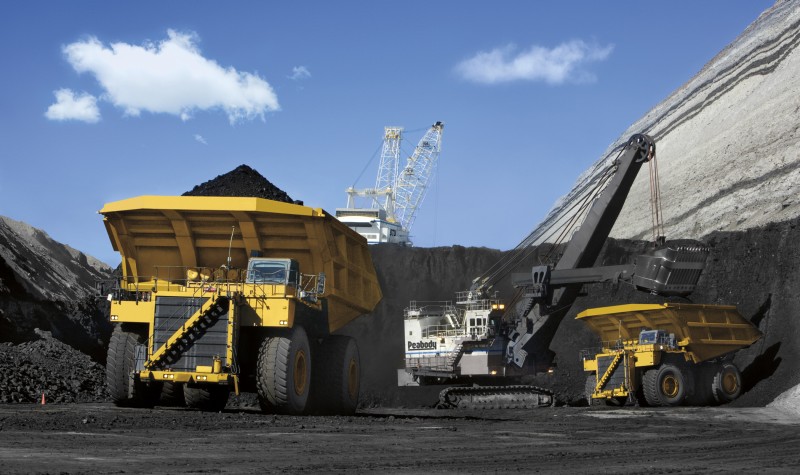Amara Mining Draws Production At Kalsaka To A Close, And Turns The Focus Back Onto Development At Yaoure

“The value in Kalsaka has always been de minimus compared to the value in the development properties”, says Amara Mining’s John McGloin.
He’s just added the role of chief executive to his existing role as chairman, following the cessation of mining at Kalsaka and the departure of former chief executive Peter Spivey to pastures new.
Peter is more of an operations man than a developer, and now that Amara’s focus is exclusively on development it made less sense for him to remain.
John, by contrast, has been instrumental in reassessing and reprioritizing work at Amara’s flagship Yaoure project, which now boasts more than six million ounces of gold in the ground, including a higher grade zone with upwards of a million ounces.
So it’s no coincidence that on the day operations at Kalsaka ceased, a bullish development update from Yaoure was also released.
“It’s been quite a task to get people to focus on where the real value is in the company”, says John.
And indeed, in spite of his incessant banging of the drum for Yaoure, which allows Amara to give itself a billing as the “largest resource base of any London-listed junior gold miner”, as the trucks at Kalsaka stopped rolling, the share price duly dipped by five per cent to 18.25p.
Kalsaka
“I always thought it was a relatively simple story”, says John. “There was small production that kept the lights on and gave us some independence from capital markets, while we worked on the development assets.”
That’s a model that was long favoured in London during the early years of the boom, and which still holds force with significant elements in the investment community. But as is often the case during and after a boom, things became blurry. It turns out, says John, that some people never looked beyond the production.
In many minds, he says, Amara was valued purely on the strength of its production and cash flow, neither of which were ever particularly spectacular, given that Kalsaka’s costs were comparatively high.
“I think the focus will now go back to where the value really is”, he says. And by that he means Yaoure. “The results show this deposit is really starting to hang together. We have got a better handle on the geology and where the high grades are.”
Highlights from the most recent drilling include 16 metres at 2.04 grams per tonne from 12 metres, 10 metres at 3.27 grams from 232 metres, and 31 metres at 3.58 grams per tonne from 192 metres. The current programme is filling in areas of the deposit previously classified as waste ore, but now showing up as mineralised.
And there should be more to come. As we speak, the rigs are still turning. There’s nine currently on site, and a tenth is due to arrive shortly. And John’s in no doubt as to what the effect of the all that drilling will be.
“We’re pretty sure we’ll add ounces”, he says, “and I would hope that the grades would climb further too. The resource will go up, and the strip ratio should go down.”
Once all the data has been gathered together and modelled, the company will present two new resources to the market later in the year. The first will be an overall resource for Yaoure, and the second will use a US$950 pit shell, and focus on the higher grade areas.
“What the market has seen is that it’s a moderate grade deposit”, says John. “But as we move further into the pre-feasibility study we’ll look at the potential for a high grade deposit. As we do the resource in September we’ll try to show a resource estimate for the CMA zone which will grade maybe two-to-2.5 grams per tonne and run to round about a million to a million and a half ounces. It’s a very strong number.”
It certainly is, and it ought to go a long way towards focussing the minds of investors. Within a few months they’ll be presented with two scenarios – a lower cost, higher grade project, which also has a lower overall value, and a higher cost, bigger option, that could make Yaoure one of the top ten gold mines in Africa by production.
Yaoure
It’s that last proposition that really puts the end of operations at Kalsaka in context. Even in its heyday, Kalsaka struggled to produce anything above 50,000 ounces a year, and lately with the gold price down on highs hit in 2011 had sometimes struggled to stay profitable.
The acquisition of the Sega deposit to add to the mine life was a good bit of business at US$1,600 gold, but made less sense in the new weaker gold price environment. The company had already remodelled once, to take account of the lower gold price, and accordingly shaved several months of the projected mine life. As it stands, there was only two weeks worth of ore left to be mined, and so the decision of a contractor to call the local Burkina operation into default will not cause the company to deviate significantly from the trajectory it was on, and as John says, may actually serve to focus the market’s attention back to where the value really lies. Much depends on the gold price, but this autumn’s newsflow will also be crucial. Watch this space.

Comments (0)